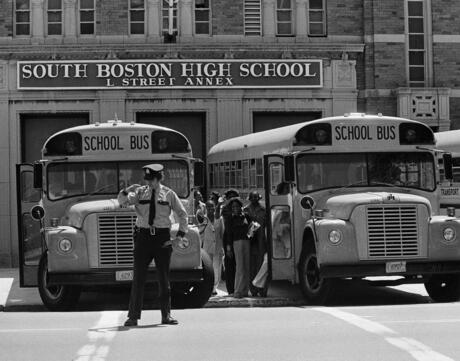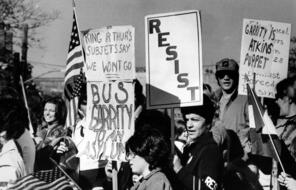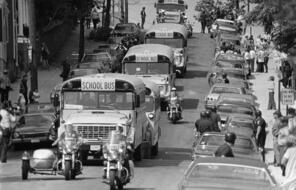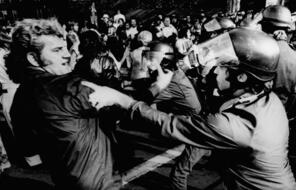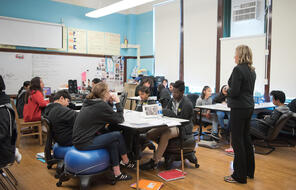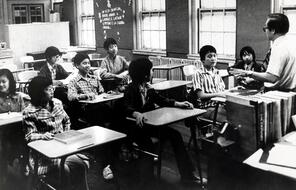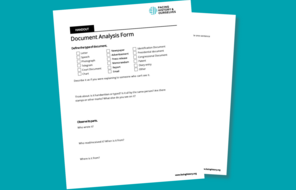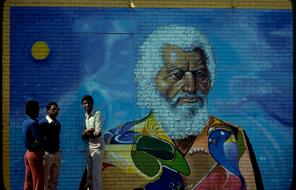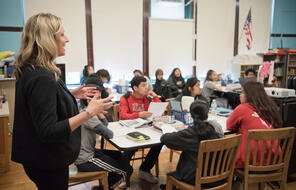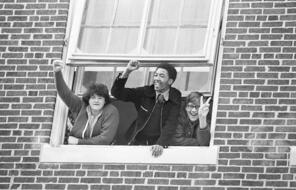In this activity, students will look at how Boston’s African American, Latinx, Chinese American, and white communities responded to the federal court’s order to desegregate the city’s schools.
By analyzing a variety of sources, students will explore the impact of Judge Garrity’s ruling and the important step toward educational justice that it represented. At the same time, they will see how the implementation of the ruling, under Garrity’s supervision, created new problems. Those who had the power and responsibility to safely and fairly implement the school desegregation plans in Boston, even when they acted with good intentions and in good faith, got important things wrong that negatively impacted the city’s African American, Latinx, and Chinese American communities.
Students will also discuss how these three communities worked to overcome both the opposition to desegregation and the failures and blind spots of those in power.
Introduce the Activity
Begin by explaining to students that Judge Garrity’s ruling in Morgan v. Hennigan represented an important step toward racial desegregation in the city. Because of the ruling, in many parts of the city, students of different races and ethnicities began to attend school together for the first time. However, Garrity’s ruling also touched off years of turmoil, negotiation, and change in relation to schooling in Boston. Students will not have the time to learn about all of this in depth, but they will look at examples in this activity of how the ruling, and the plans for desegregating the schools that followed it, impacted African American, Latinx, Chinese American, and white students and families in Boston, as well as how members of those communities responded.
Read and Annotate Sources
Assign one of the following readings to each student:
If you assigned the readings for homework (see Notes to Teacher), students may have already read and annotated the texts. Now their task is to read, or reread, their assigned reading and identify:
- One sentence that they think captures the core idea of the text
- One phrase that moved, engaged, or provoked them
- One word that captured their attention
Discuss Sources in Small Groups
After students have had five to ten minutes to identify their sentences, words, and phrases, divide them into groups of four to six. All the members of each group should have the same reading. Depending on class size, you might have more than one group for each reading.
Once students are in their groups, give them five to ten minutes to share what sentences, phrases, and words they have identified. To make efficient use of class time, you might ask each student to share their sentence, phrase, OR word and then explain why they chose it.
Next, if logistically possible, give each group the opportunity to watch the video that supplements their reading (see Notes to Teacher). Each video includes voices of people who participated in the community responses to the desegregation plan. After each group finishes their video, they should briefly name what new information or understanding they gained.
Analyze Community Responses
Now share the following discussion prompts. Give students three to five minutes to discuss each question in their small groups, and then ask each group to summarize their conversation for the whole class before moving to the next prompt.
- Evaluate the actions of the leaders who had the responsibility to carry out the plans to desegregate the schools in Boston. What did they get right? What did they get wrong?
- Why do you think the leaders got things wrong?
- In your reading, how did the African American, Latinx, Chinese American, or white community respond?
As groups report out, take notes on chart paper or the whiteboard in three columns: What Leaders Got Wrong, Why, and Community Responses. Note: Students will need the notes from the chart to complete the formative task. You can have students copy down these notes, or you can snap a photo to post online for them to access later.
